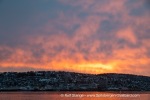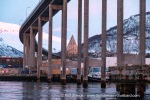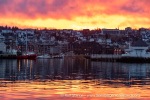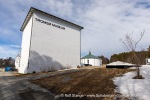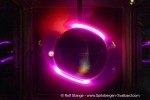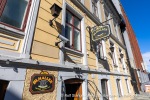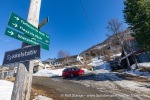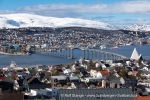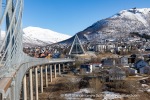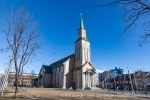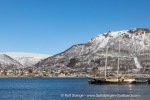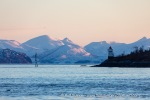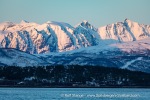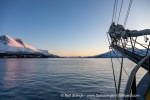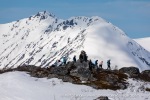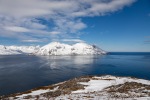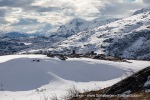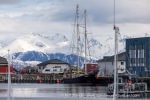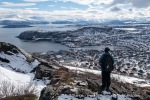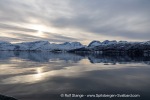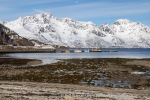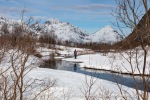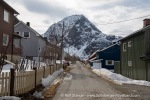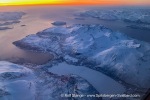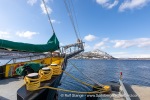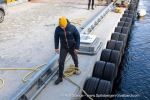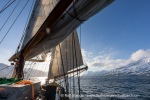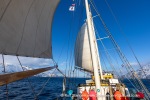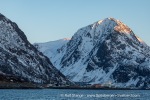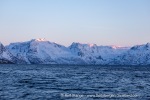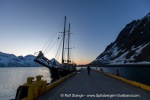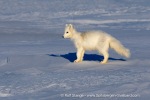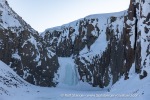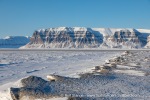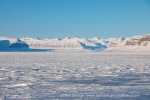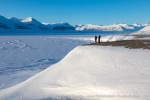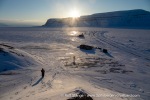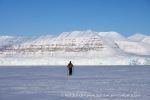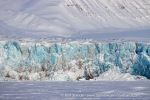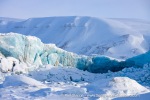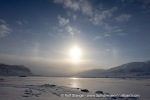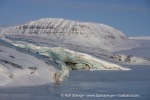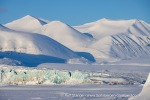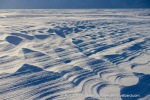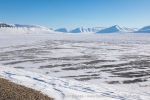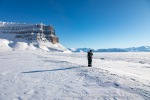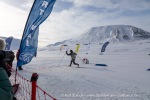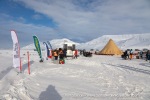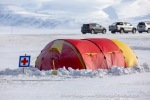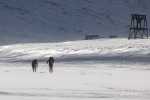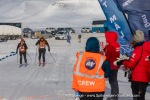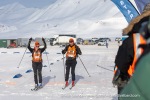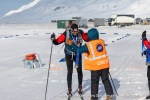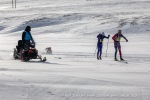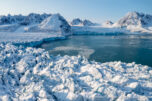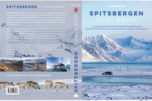-
current
recommendations- Liefdefjord
New page dedicated to one of Spitsbergen's most beautiful fjords. Background information and many photos.
- New Spitsbergen guidebook
The new edition of my Spitsbergen guidebook is out and available now!
- Liefdefjord
New page dedicated to one of Spitsbergen's most beautiful fjords. Background information and many photos.
Page Structure
-
Spitsbergen-News
- Select Month
- June 2025
- May 2025
- April 2025
- March 2025
- February 2025
- January 2025
- December 2024
- November 2024
- October 2024
- September 2024
- August 2024
- July 2024
- June 2024
- May 2024
- April 2024
- March 2024
- February 2024
- January 2024
- December 2023
- November 2023
- October 2023
- September 2023
- August 2023
- July 2023
- June 2023
- May 2023
- April 2023
- March 2023
- February 2023
- January 2023
- December 2022
- November 2022
- October 2022
- September 2022
- August 2022
- July 2022
- June 2022
- May 2022
- April 2022
- March 2022
- February 2022
- January 2022
- December 2021
- November 2021
- October 2021
- September 2021
- August 2021
- July 2021
- June 2021
- May 2021
- April 2021
- March 2021
- February 2021
- January 2021
- December 2020
- November 2020
- October 2020
- September 2020
- August 2020
- July 2020
- June 2020
- May 2020
- April 2020
- March 2020
- February 2020
- January 2020
- December 2019
- November 2019
- October 2019
- September 2019
- August 2019
- July 2019
- June 2019
- May 2019
- April 2019
- March 2019
- February 2019
- January 2019
- December 2018
- November 2018
- October 2018
- September 2018
- August 2018
- July 2018
- June 2018
- May 2018
- April 2018
- March 2018
- February 2018
- January 2018
- December 2017
- November 2017
- October 2017
- September 2017
- August 2017
- July 2017
- June 2017
- May 2017
- April 2017
- March 2017
- February 2017
- January 2017
- December 2016
- November 2016
- October 2016
- September 2016
- August 2016
- July 2016
- June 2016
- May 2016
- April 2016
- March 2016
- February 2016
- January 2016
- December 2015
- November 2015
- October 2015
- September 2015
- August 2015
- July 2015
- June 2015
- May 2015
- April 2015
- March 2015
- February 2015
- January 2015
- December 2014
- November 2014
- October 2014
- September 2014
- August 2014
- July 2014
- June 2014
- May 2014
- April 2014
- March 2014
- February 2014
- January 2014
- December 2013
- November 2013
- October 2013
- September 2013
- August 2013
- July 2013
- June 2013
- May 2013
- April 2013
- March 2013
- February 2013
- January 2013
- December 2012
- November 2012
- October 2012
- September 2012
- August 2012
- July 2012
- June 2012
- May 2012
- April 2012
- March 2012
- February 2012
- January 2012
- December 2011
- November 2011
- October 2011
- September 2011
- August 2011
- May 2011
- April 2011
- March 2011
- February 2011
- January 2011
- December 2010
- November 2010
- September 2010
- August 2010
- July 2010
- June 2010
- May 2010
- April 2010
- March 2010
- February 2010
- November 2009
- October 2009
- August 2009
- July 2009
- June 2009
- May 2009
- April 2009
- March 2009
- February 2009
- January 2009
- December 2008
- November 2008
- October 2008
- August 2008
- July 2008
- June 2008
- May 2008
- April 2008
- March 2008
- February 2008
- April 2000
- Select Month
-
weather information
-
Newsletter

| Guidebook: Spitsbergen-Svalbard |
Home
→
Yearly Archives: 2024 − News & Stories
Tromsø
Sat
27 Apr
2024
Tromsø! What shall I say, this beautiful city is well known. We had decided to spend a whole day here, something that would also fit well with our plans for the days to come. And there is so much to do and to see in Tromsø.
Starting with the stunning evening light on our arrival the night before. Amazing, Tromsø just looked as if it was on fire!
To start with, I went to Tromsø Museum (“Norges arktiske Universitetsmuseum”) near the south end of the island. For years, I wanted to see the “terrella”, Christian Birkeland’s experiment where he famously created the first artificial northern light in his laboratory. The terrella (“little earth” had been in the museum’s archives for ages and now it is on display again. Somewhat hidden and without any explanation mentioning the name of Christian Birkeland or the term “terrella”. But anway … I’ve seen it … I’ve seen the light 🤩 and that’s something I’ve really been wanting to do for some time, being the northern light fan I am.
But that was just one thing. As said, there is so much to see and to do in Tromsø.
- gallery anchor link: #gallery_2998
Click on thumbnail to open an enlarged version of the specific photo.
Skjervøy
Thu
25 Apr
2024
The lovely little island of Skjervøy in Kvænangen is home to the town of the same name, the largest one in the region with near 2400 inhabitants. Skjervøy’s moment of fame was on 20 August 1896 when Fram showed up, Fridtjof Nansen’s ship of the famous 3 year ice drift across the Arctic Ocean. Nansen himself was not on board, however. He and his companion Johansen had left Fram the year before, trying to ski to the north pole – which they didn’t reach – and after a winter on Franz Josef Land they had returned to Vardø further east in north Norway a week before Fram‘s arrival in Skjervøy.
Old stories. What most of us got more excited about was a hike up the mountain Lailafjellet. Beautiful! Not the highest mountain in the area with a mere 205 metres, but that’s enough to give you a stunning panoramic view.
The passage towards Tromsø later the same day came with some great scenic impressions.
- gallery anchor link: #gallery_2995
Click on thumbnail to open an enlarged version of the specific photo.
From Øksfjord to Skjervøy
Wed
24 Apr
2024
It’s been another long day and I am not into spending a lot of time with the computer now, so some photos and a very few words will do … from the beautiful morning in Øksfjord to the arrival in Skjervøy in the evening in snowfall.
- gallery anchor link: #gallery_2992
Click on thumbnail to open an enlarged version of the specific photo.
Under sails through Altafjord
Tue
23 Apr
2024
We started this year’s season “Arctic under sails” with SV Meander in Alta in north Norway! And we took “under sails” literally. The weather was great, with a fresh, cold breeze and the sun shining from a blue sky.
Of course it didn’t take long until the sails went up. What a start, under sail in Altafjord and Stjernsund!
We finished the day alongside in Øksfjord with a little walk around the bay or to the frozen lake.
- gallery anchor link: #gallery_2989
Click on thumbnail to open an enlarged version of the specific photo.
Tempelfjord in the light winter
Sat
20 Apr
2024
Some fresh impressions from Tempelfjord, showing a bit of the beauty of this arctic winterwonderworld. It had been pretty cold in recent weeks and more of the fjords are frozen than otherwise in recent years, in times of climate change. That is both good and beautiful and it is also very convenient for travelling at this time of year, you can walk and drive (as far as still allowed) on the fjord ice. Safety is an issue of course, fjord ice can be very dangerous. But when strong enough, it is great. We could ski across the ice to the glaciers in inner Tempelfjord, Tunabreen and Von Postbreen. What a beautiful icy world.
- gallery anchor link: #gallery_2986
Click on thumbnail to open an enlarged version of the specific photo.
Svalbard skimarathon in wind and cold
This year’s Svalbard Skimarathon went off Saturday morning. Strong wind made the race a challenge for the 648 participants and even threatened to burst the event: the weather service had issued an avalanche warning for the general area, and Todalen, the valley with the race track, is generally speaking an area where avalanches are known to occur.

The Svalbard skimarathon went on Saturday in Todalen under challenging conditions:
strong wind and -12 degrees centigrade.
Avalanche safety was taken care of by a team of specialists who surveyed the area just before the race by helicopter and on the ground, so the race could start with a delay of one hour. The range of participants included professionals such as the Norwegian Olympic champion Olaf Tufte, ambitious amateurs and families with children who could chose between half and full marathon.
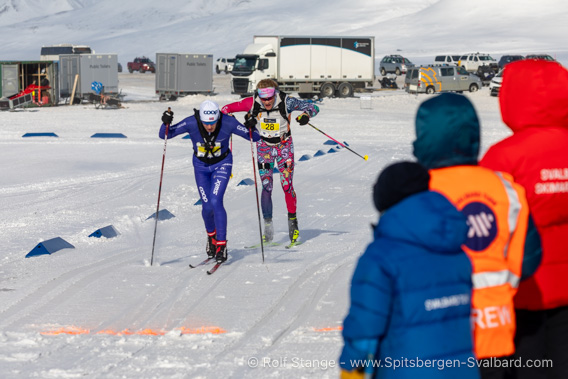
Full distance Winner Petter Soleng Skinstad with a time of 2:19:11, followed by Eivind Vold.
For all of them the race was a significant challenge, considering the arctic weather conditions and 400 metres of altitude that had to be covered up and down.
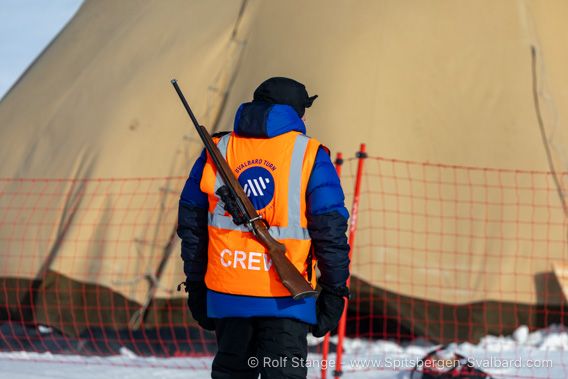
At any other marathon elsewhere, this would immediately have caused a major police operation. In this case, nobody paid any particular attention 🙂
Some more impressions from this year’s Svalbard skimarathon.
- gallery anchor link: #gallery_2983
Click on thumbnail to open an enlarged version of the specific photo.
Longyearbyen has got the power
Longyearbyen and its power: a never-ending story. This is not about higher powers, it is about electricity and long-distance heating. But this is enough to write a book about in this little town in Adventfjord (not for me as an author, thanks).
As visitors of this website will probably know (have a look here for a quick refresher), Longyearbyen’s power supply was based on coal for more than a century. Last autumn, coal was replaced with diesel. This is a temporary solution only, the idea is to install something more environmentally friendly, ideally without CO2-emissions. But nobody knows what exactly this should be although it is a question that has been debated for years already. The idea of a nuclear power plant for this town with 2500 inhabitants has recently surfaced again in a letter to the editor of Svalbardposten, the local newspaper.
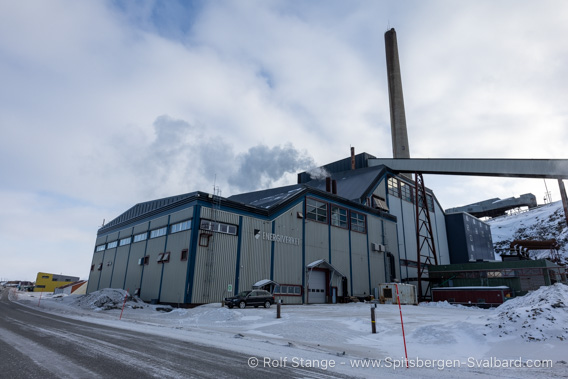
The Power plant in Longyearbyen supplies people with electricity, long-distance heating and conversation topics.
Technical issues and capacity worries
The operation of the new diesel generators, however, turned out to be anything but smooth. There have been technical issues more than once, including a havary of one of the engines that was similar to an explosion. One man got a good share of oil and engine parts from short distance. Luckily, he did not receive any serious injuries. Major customers who have got their own emergency power systems such as mine 7, the last coal mine near Longyearbyen still in operation, and KSat (the operator of the satellite antennas on Platåberg) have been asked to use their capacities to reduce the burden on Longyearbyen’s power plant.
Help from the Norwegian military
A few weeks ago, Sysselmester (governor) Lars Fause decided that Longyearbyen’s power supply system was not good enough, especially in these times of cold temperatures, and he asked the Norwegian military for help. They have capacities to set up a power supply system anywhere on short warning, and that is just what they did in Longyearbyen. The military generators now serve as a backup system in case the original system should experience major troubles, it is not intended to be used. But this is only a temporary backup and not a permanent solution.
The Norwegian airforce was heard saying that they could evacuate Longyearbyen quickly at any time if needed. This rather drastic measure could come into play in the event of a major interruption of Longyearbyen’s power supply, something that could quickly lead to a dangerous situation especially in the cold season. Temperatures have recently often been under -20°C, and most houses are poorly insulated. And almost all buildings in Longyearbyen rely on distant heating. A collapse of the distant heating system would soon seriously affect the water supply, which in itself is challenging enough even when heating and power are no problem. We have seen enough of that in recent weeks.
Price increase to be expected
Nobody knows for sure what Longyearbyen’s power supply of the future will look like. But there is little doubt that it will be expensive. Little Longyearbyen will hardly be able to pay the bill on its own and financial aid from Oslo is likely to play a major role. Nevertheless, an increase in prices is expected (they are talking about this while I am writing) – starting on a level that is already pretty high.
Diesel power plant without permission
To make things even “better”, the diesel power plant that is now in operation is running without the necessary permissions. The operator, a company owned by the community, appears to have assumed that the old license for the coal power plant would be sufficient also for the diesel generators, also based on the assumption that emissions would now be lower. There appears to be some uncertainty about wether or not this is actually the case, but higher authorities have now made it clear that the operation of the power plant requires permission which is not yet in place. At least, authorities have remarked that there is awareness of the importance of the power plant for Longyearbyen and a forced shutdown is not to be expected on short notice (but theoretically possible).

Longyearbyen’s power plant: “legalise it” 😅
With a subtle hint to an entirely different debate.
Photomontage by Wolfang Hübner-Zach, without any personal interest in the matter that is added to the original photo.
Ready for yet another fun fact? There was a diesel power plant in Sveagruva, the former mining settlement in Van Mijenfjord that has undergone a major cleanup in recent years. There are those who knew it and who say that it would have served Longyearbyen perfectly well.
The old Svea power plant has recently been turned into scrap metal.
At least the generators from Lunckefjellet, Sveagruva’s most recent mine that never entered the stage of productive production, are now envisaged to replace the above-mentioned military generators and serve as a backup for Longyearbyen’s main system.
New fish species found in Eskerdalen
Most people would probably not expect to find any fish at all in Spitsbergen’s rivers and lakes which are frozen most of the year. Arctic char is quite well known, a fish similar to salmon, and pink salmon, an invasive species that has arrived in Svalbard in recent years. Both are mainly found in larger lakes and laggons and rivers that connect these waters with the sea.
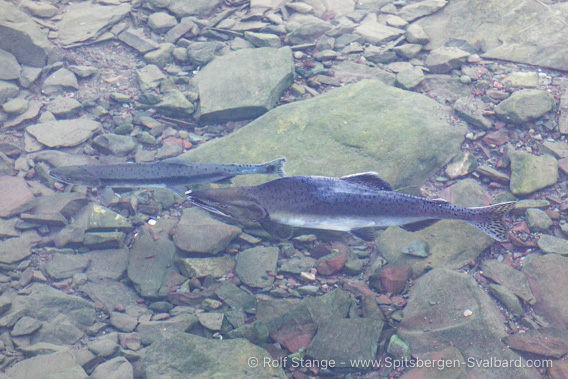
Fish in Spitsbergen’s rivers, arctic char and pink salmon.
If you do a trip to the east from Longyearbyen in the winter, for example to Tempelfjord or the east coast, you will pass a little waterfall in Eskerdalen, known as Eskerfossen. It is a popular place for a little rest.
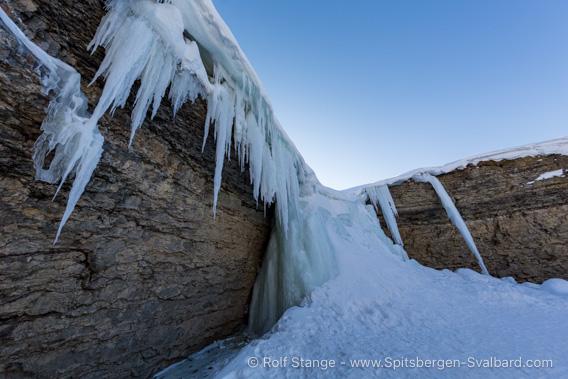
The waterfall Eskerfossen in winter.
Currently you can see something pretty unusual at Eskerfossen: there are several fishes in the mostly clear ice, just under the surface.

Eskerfossen with fishes.
It is not just the the view of fishes in the ice of a waterfall is more than just a little unusual. Beyond that, it is a species that is so far unknown from Spitsbergen’s waters.
Is it a new species? An invasive one, or was evolution incredibly fast this time? Is it connected to climate change? The Russians? Aliens? ..?
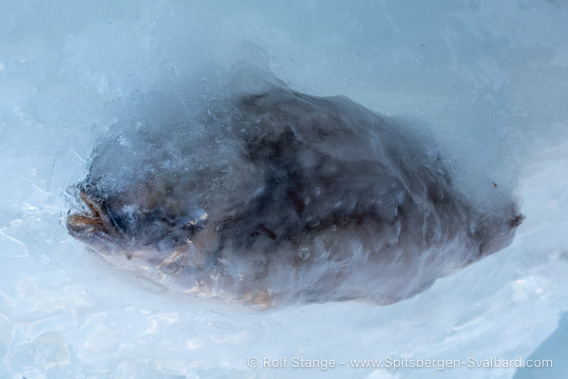
Fish in Eskerfossen. Image turned 90 degrees for easier viewing.
The answer to this problem is certainly much easier than that: this remarkable discovery was made on April 2, and it is well known which day comes before April 2.
It appears safe to assume that, other than Eskerfossen, the freezer in Svalbardbutikken (the supermarket) is most likely the only place where this species can be found in Svalbard 😄
With this slightly delayed April fool’s day joke (the original creator of which is unknown to me) I wish everybody a happy remaining April!
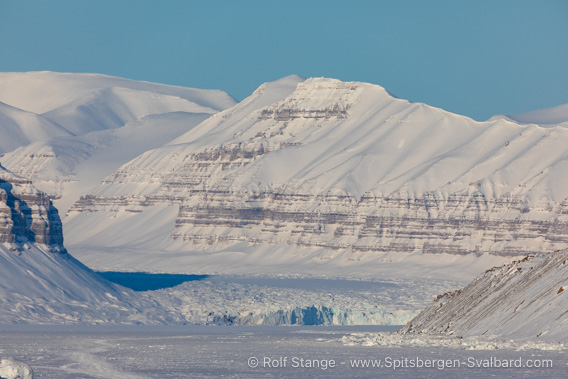
View into Tempelfjord from Fredheim, 12 km north of Eskerfossen.
Easter greetings from Spitsbergen
It has been a bit calm on this page recently, but there are reasons for that. A good part of life still happens in the offline world 🙂.
Spitsbergen is currently stunningly beautiful. It is icy cold, just as you would expect in the Arctic during the winter. Last night it was -30°C in Adventdalen. Near sea level, that is.
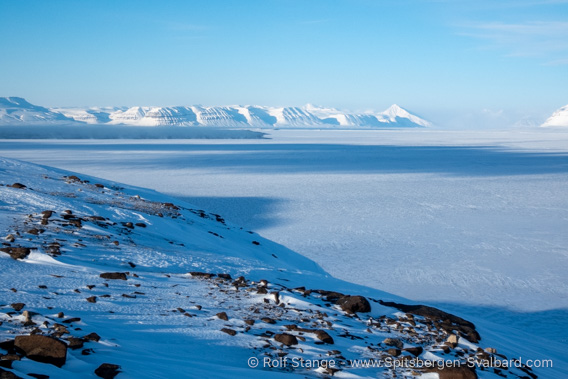
View over the frozen Sassenfjord.
It has been cold for a while now, and there is more ice in the fjords than there was in the recent past. Sassenfjord is frozen, as you can see in these pictures, and that had not been the case in a while. The ice edge is currently stretching from Diabasodden to Gåsøyane.
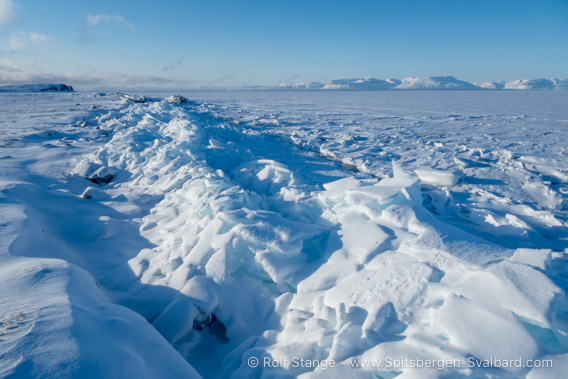
The shore at Elveneset, view to the west (Dickson Land in the background to the right).
It is a privilege to spend a moment standing at the shore of Sassenfjord, enjoying the view of the ice and the surrounding scenery. It is an experience that makes it easy to leave the world with all its troubles behind for a precious moment, something that feels really good.
In this sense I wish everybody who made it to this website – and everybody else, too – happy, peaceful Easter holidays!
And because it is so beautiful: once again the view of Sassenfjord, seen from Elveneset.
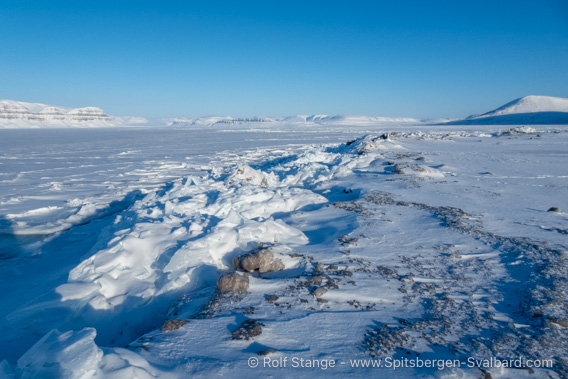
The shore at Elveneset, view to the east, with Tempelfjord in the distance.
Jan Mayen 2015: climbing Beerenberg – video by Pascal Prinz
Jan Mayen 2015 … it’s been a while! Well, there are experiences that you just can’t repeat (especially when the island in question has meanwhile largely been closed by the responsible government, but that is another story).
Then, we reached the top of Beerenberg and more. You will, as usual, find my own impressions in my travel blog (June 2015). But Pascal Prinz captured some cool moving images and now he has compiled them to produce a great little video:
You are currently viewing a placeholder content from YouTube. To access the actual content, click the button below. Please note that doing so will share data with third-party providers.
More InformationJan Mayen and Beerenberg 2015, by Pascal Prinz
Thank you, Pascal! 😀👏👍
Polar bear „Frost“: anaesthetization not cause of death
The death of the female polar bear “Frost” and her cub on Good Friday 2023 in Sassenfjord had attracted international attention (click here for further details). The polar bear family had come close to an area with huts on Vindodden and people had scared the two bears away. Soon thereafter Frost was seen dead in the water not far from the shore. The police (Sysselmester) was involved; they shot the young bear that had appeared to be aggressive and secured the bodies and other information for investigations.
Soon it became known that Frost and her cub had been anesthetized just two days before their death by scientists from the Norwegian Polar Institute. This led to speculations that the anaesthetization might have been the cause of the death of the two bears which had appeared to be a bit of a mystery; usually polar bears are excellent swimmers and they cover great distances in icy waters with ease.
Now the authorities have an autopsy report; it is (so far) unpublished, but Svalbardposten could read at least parts of it. The result: the anaesthetization was not the cause of death. Frost had serious internal injuries including broken ribs, a punctured lung and internal bleeding. According to the report, these injuries were the cause of Frost’s death.
It is not known how Frost received these injuries. A fall from a cliff appears as a reasonable scenario.
The anaesthetization had been done two days earlier in Tempelfjord, six to seven kilometres away from Vindodden where the two bears later died. After the anaesthetization, the scientists had observed Frost and her cub for a while until their behaviour appeared to be normal again. A causal connection between the anaesthetization and Frost’s death is therefore ruled out by the authorities.
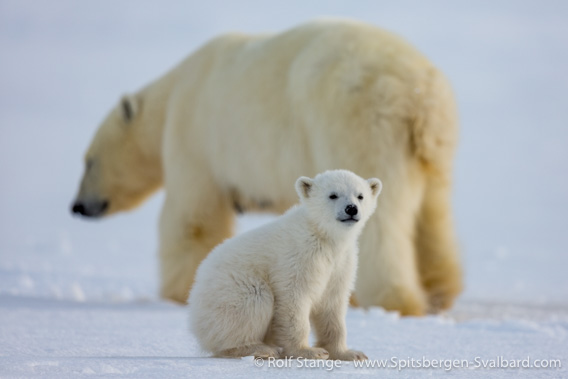
Polar bear family in Isfjord. It is not known if this was Frost.
Every year several dozens or a three-digit number of polar bears are anaesthetized by scientists for investigations. The polar bears are marked and some of them equipped with transmitters, size and weight are recorded and various samples taken. Also Frost, known to scientsists as N23992, had been through that procedure a number of times in her life. Polar bear biologist Jon Aars of the Norwegian Polar Institute says that he and his colleagues have anaesthetized about 1000 polar bears in 20 years. In 3 cases, polar bears are known to have died from the consequences; there might be at least a 4th case which is not proven beyond a noticeable temporal connection. In any case, the procedure involves significant stress for the bears and it is thus criticized by animal rights activists.
The female polar bear Frost had been seen by many, also because she had a tendency to stay near huts and settlements. She had made it a habit to break into huts, an unfortunate habit which she appeared to have taught to her cubs. She became a bit of a celebrity through media coverage including the documentary “Queen without land” made by Asgeir Helgeland (original title: „Dronning uten Land“). Click here for more about Frost’s adventurous and partly tragic life.
Her tendency to stay near settlements and to break into huts was anything but popular amongst locals, and there were many who took the information about her death with relief.
Radioactive caesium lost near mine 7
Radioctive? Caesium? Lost? That may raise more than an eyebrow or two.
So before anyone gets high blood pressure: no need to. Nothing and nobody is endangered and that won’t change.
Similar case in Australia
The story reminds one of a case in Australia in January 2023 when a very small capsule of radioactive caesium was lost during road transport over 1400 kilometres. If handled irresponsibly, caesium can indeed be a very dangerous substance. Hence, a major search was initiated and the caesium capsule was found only two days later.
Caesium capsule lost in 1984
A similar capsule was lost on the mountain Breinosa near mine 7 east of Longyearbyen in Spitsbergen. The incident happened in 1984, no less than 40 years ago. Now the story surfaced again in a report in the context of preparations to close mine 7 in 2025, as Svalbardposten recently reported.
The difference to the case in Australia: the caesium capsule in Spitsbergen is still where it was lost in 1984. And it will stay there.

Mine 7 and the mountain Breinosa: caesium capsule under 300 metres of solid rock
(photo taken during a scheduled flight to Longyearbyen).
Radioactive caesium 137 in mining
So what happened? A source of radiation such as a capsule of caesium 137 is used for example during prospecting mineral resources: it can be applied to get information about the composition of rocks. The idea is that the intensity of radiation received by a measuring device from a source of known intensity and in a known distance yields information aboutn the density of the rocks between the source and the measuring device and this again tells geologists something about the potential presence (or absence) of materials such as coal that have a different density than, say, sandstone.
But it is not a good thing when someone drops the caesium capsule into a borehole more than 300 metres deep. This is not to say that someone actually dropped it manually, a caesium capsule is not something you just hold in your hand, obviously. But anyway, somehow the capsule disappeared into that 300 m deep, narrow hole near mine 7 on the mountain Breinosa during prospecting work.
The caesium capsule will stay where it is
It is technically not possible to retrieve the caesium capsule from more than 300 m depth at the bottom of a narrow borehole without creating an entirely new way of access, something that would obviously involve massive effort. On the other hand, a rock cover of 300 m provides a pretty safe place for a small amount of caesium. Groundwater flow leaking to the surface is ruled out by experts, and erosion of more than 300 m of solid rock would require more than one glaciation period, roughly equivalent to 100,000 years, and even longer time in case there won’t be any future periods of major glaciation. In other words, it can be ruled out that the caesium capsule will appear at the surface due to natural processes for a very long time.
Another factor of the risk assessment is the half life of caesium 137 which is 30.1 years. This means that already now the activity of the caesium is reduced by more than 50 %. After a total of 10 half life periods, a good 300 years in total, the remaining radiation is under the theshold of detection threshold and far from levels that might be a risk for health of environment. Considering all this, authorities and mining company have decided to let the caesium capsule rest in peace where it is. The only measure taken is to document the incident and the whereabouts so it is known to future generation that it might be a bad idea to dig a deep hole in that very position.
New rules coming in 2025
It’s the news we had been kind of waiting for. Kind of. Hoping they wouldn’t come in the end, at least not like this: the new rules are now scheduled to enter force on January 01, 2025. From then on, Spitsbergen won’t be the same anymore, with significant restrictions on the freedom to move around over large parts of the archipelago. The Norwegian government published their decision today (Friday, February 09).
It is largely exactly what had been put on the table well over two years ago, despite great public interest with a lot of input during the public hearing process. All this did obviously not become part of the decision as it was finally made. Observers such as AECO and the local tourism organization in Longyearbyen have expressed their disappointment over what they consider a process where the decision was made before the public discussion even started. Many had maintained hopes that the government would reconsider certain parts of the original proposal in the light of the hearing process and public discussion, but this did clearly not happen.
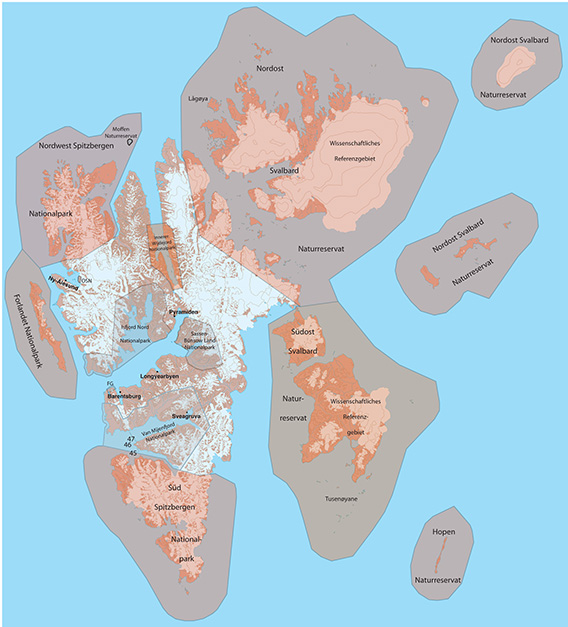
The areas marked red will largely be closed from January 2025.
The most important change for many will be that the large protected areas, the national parks and nature reserves, will mostly be closed for tourists. These areas comprise approximately 65 % of the Spitsbergen archipelago, as illustrated in the map.
The changes
The overview of the most important changes as far as they are currently known:
- National parks and nature reserves will mostly be closed for tourists from 2025, except 43 locations selected by the government. This does not apply to individual travellers and locals.
- Within national parks and nature reserves, ships may not carry more than 200 passengers.
- Drones may not be used in protected areas.
- A speed limit of 5 knots applies within 500 metres from certain bird colonies.
- Minimum distances from walrus haulout sites: 150 m for motorized boats, maximum speed 5 knots within 300 metres.
- Minimum distances from polar bears will be set, probably 300 or 500 metres depending on the season.
- Breaking fast ice will be forbidden, with exceptions for shipping routes to Longyearbyen, Barentsburg, Ny-Ålesund and for the coast guard.
- Permission procedures for camps will be tightened.
- Bans on motorized traffic on fjord ice will be enhanced.
Some of these aspects are already to varying degrees in force or common good practice.
Consequences
Larger ships within the segment known as expedition cruise ships, carrying between 100 and 200 passengers, have in recent years already largely focussed on well-established standard landing sites within the usual context of cruises of a week or so. These ships will probably be able to continue their operations with comparatively minor adjustments. And as for pricate yachts, nothing may change for them at all. Those who will be most seriously affected are most likely small ships which operate long trips of two weeks or even more, while relying heavily on a high degree of flexibility when it comes to picking landing sites in the given context of weather, ice and wildlife on a certain day in a particular area. Their operation basis will largely vanish with the new regulations.
Comment
Disclaimer: I can not claim to be a neutral observer. I am part of the tourism industry with a strong focus on small ships and long trips with many landings.
Having said that, I want to comment on the new regulations from the perspective of someone with comprehensive practical experience in the said trade. Having this experience makes me a biased, but, well, an experienced observer – that’s what comes with experience (and that’s probably about the only kind of funny part of this text).
Let’s assume the the basic idea of the whole project was to do something to protect nature. Considering the broader political picture, I am not even so sure about this. As we have seen in the recent past, Norway plans to develop oil and gas also in the Barents Sea; some of the areas we are talking about here will be open for commercial fishing also in the future, namely bottom trawling in waters deeper than 100 m in the Hinlopen Strait; and Norway has recently taken important steps towards deep-sea mining in large parts of the northeast Atlantic. Considering this whole picture, it seems ridiculous that tourists impose a threat to the environment that would justify closing an area about the size of Denmark.
This does, however, not mean that there wouldn’t be important tasks for politics. More about that soon.
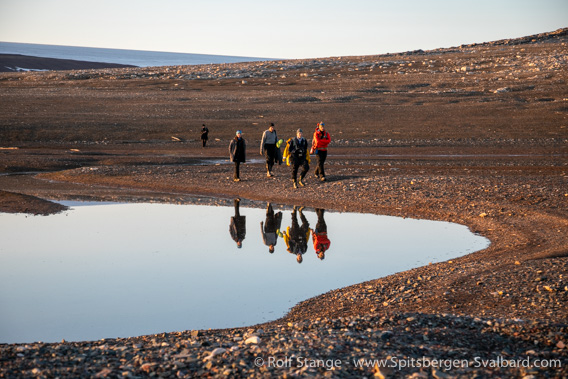
Small group hiking in a remote part of Nordaustland: not possible anymore from 2025.
The small number of remaining landing sites will see heavy traffic mainly from bigger ships that will divide them amongst themselves well before the season starts probably by means of a pre-booking system that the industry will establish based on systems that area already in use. The idea of picking landing sites depending on local conditions given on any particular day will become obsolete, something that is also a safety issue, and not a small one. And private yachts who are often lacking local experience and knowledge of relevant local regulations may continue as they please. It seems safe to assume that even more small sailing boats may in the future use the loophole of running trips as private which actually are commercial. Small groups with poor management, be it because of lack of knowledge or out of ignorance, have often proven to be a greater problem for the environment than a well-managed group of 50 or 100 tourists or even more.
Good political management would establish a balance of quantity – defining upper limits – and quality – defining lower limits.
Of course there would have been – and still is – the need and possibility to introduce a good set of rules. It may seem obsolete now, but just to mention a few examples, as has been done many times in recent years by many people and organisations, often with a background of comprehensive relevent knowledge and experience: it would be an option to reduce passengers numbers even further, for example to a maximum of 100 passengers per ship (just an example – a lower number could be considered if it is accepted that quantity is the main problem) that puts tourists ashore anywhere. Also the number of ships could be limited. As in some national parks elsewhere in the world, the number of permits for ships could be limited, ideally this should have been done in, say, 2010 or 2012, when a similar discussion was already going on but traffic was still on a comparatively lower level. It is the growing number of ships and tourists that we have seen since then that many are worried about, a concern shared to some degree by this author. So, if the number of ships and tourists is considered to be the key issue, why then not reduce the number of ships and tourists? Why instead reduce the quality of the experience especially for those ships who bring a minor fraction of total visitor numbers, while leaving the largest ships and the smallest boats in relative peace? Reducing the freedom to land anywhere to a number of well-selected comparatively robust landing sites (vegetation would be an important factor in selecting such sites) could be introduced for larger ships which carry larger passenger numbers which are more likely to damage vegetation, while there is no need to restrict movements for a group of, say, twelve passengers plus one or two guides.
Considering the above-mentioned idea of defining a lower limit for quality, a thought-through, practicable guide certification scheme would be the solution, defining a minimum level of relevant knowledge that is available within any – any (before someone gets really mad with me: except locals) – group travelling Spitsbergen outside the settlements or, say, outside management area 10 (a large area mainly around Longyearbyen, covering most of Isfjord and the land area south of Isfjord from the west coast almost to the east coast). Problem solved.
It is a pity that the chance was missed to design a good regulatory framework for sustainable quality tourism. Secretary of the environment Andreas Bjelland Eriksen, in office since 2023, did not leave the impression to be particularly knowledgeable about or interested in the matter when making comments to Svalbardposten.
Before he took over in the ministry of climate and the environment, Eriksen was, by the way, undersecretary of state in the ministry of petroleum and energy.
Fire in Longyearbyen
There was a fire in Longyearbyen yesterday (Sunday, February 04) in the late afternoon in way 232 in Gruvedalen, the part of Longyearbyen east of Svalbardmuseum.
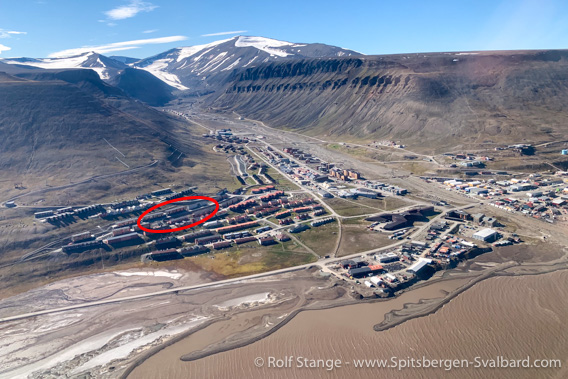
The area where a fire destroyed a house in Longyearbyen on Sunday.
Several buildings in the area were evacuated and there was a risk of the fire spreading to other houses. But this could be prevented by the fire brigade. Mayor Terje Aunevik lauded their efforts with warm words.
Nevertheless, the fire destroyed three flats completely and further damage could not yet be excluded on Monday morning. Nobody was injured. Nothing is so far known about the cause of the fire.
The community took swift efforts to take care of all concerned, but the loss of three flats is a hard blow on a housing market that is already difficult, to put it mildly.
The last fire in Longyearbyen before Sunday’s was in September 2022, when three houses with altogether 12 flats were completely destroyed. Also then, luckily nobody was injured.
Emergency services affected by weather
Last week’s storm over north Norway influenced not only traffic in general, but also public emergency services. Several times, planes from and to Longyearbyen had to cancel the scheduled stopover in Tromsø.
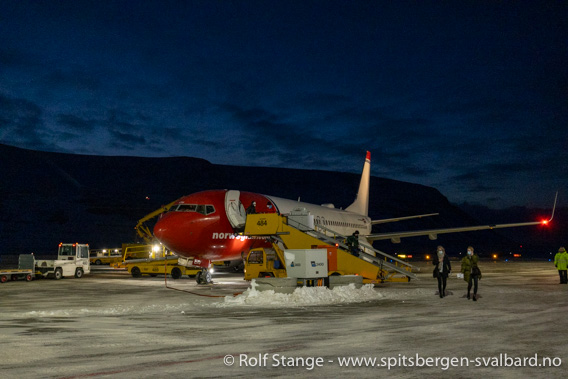
Longyearbyen Airport: both scheduled and other flights depend on flight weather also in north Norway.
This is anything but unheard of in an area with frequent rough weather conditions such as north Norway, but it makes clear how remote Svalbard still is today especially when it comes to emergency services. In such conditions, medical evacuations to the mainland may be impossible for several days. This may especially be the case when only smaller propeller-driven aeroplanes are available, rather than more robust jet aircraft.
The local hospital in Longyearbyen is small and services available there are comparatively basic. In urgent cases, patients are flown to the university hospital in Tromsø. There was a case as recently as early January when a patient could not be flown out when needed, he had to be taken care of locally until flight conditions were better the next day. In a case in 2022, a patient with heart problems had to wait 8 hours for the emergency plane. In this case, the outcome was sadly fatal.
This situation also worries local authorities: the Sysselmester requested already more than once a reliable 24/7 available emergency service from responsible mainland authorities, according to Svalbardposten.
News-Listing live generated at 2025/June/17 at 09:00:36 Uhr (GMT+1)
